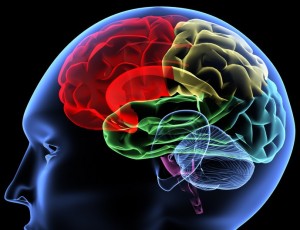Caution: Lack of Sleep Has Been Proven to be Hazardous to Your Health
You’re tired. Exhausted, in fact. All you can think about is the time when you can crawl into your bed after a long day and wait for the blissful slumber to overtake you. But for millions of us, this process is not as easy as it should be. 30-40% of adults suffer from insomnia, and find it difficult to get to sleep, stay asleep, or both.
Sleep is a complex function. Rather than being a time when your brain simply shuts down, it is a time of active regeneration for both brain and body. It is a time when our memories consolidate, when our cells regenerate, and when our brain makes sense of what it experienced during our wake hours.
Sleep deprivation should not be taken lightly. It has been used throughout history as an effective method of torture and punishment, and research has shown that prolonged sleep deprivation can literally drive a person crazy.
Lack of sleep doesn’t just lead to fatigue. It has been linked to weight gain, inability to cope with stress, delayed healing, increased risk of cardiovascular disease, diabetes, compromised immune system function, and neurotransmitter imbalances which can cause depression and altered perception.
Now that you understand that insomnia isn’t just annoying and inconvenient, but actually dangerous, I think it’s time to review some important tips on how to get a good night’s sleep.
The Magic of Ninety Minutes
Researchers refer to “sleep architecture” as the pattern of sleep cycles that one completes during the night (or during a nap). Each cycle lasts 90 minutes, and consists of rapid eye movement (REM) sleep, when we do our active dreaming, and four stages of non-rapid eye movement sleep, where we experience deep sleep. In order to enjoy restorative sleep, each 90-minute cycle must be completed. If a 90-minute cycle is interrupted for any reason, you will not feel adequately rested.
For this reason, many sage individuals conclude that if they get six hours of non-interrupted sleep, they feel better, more rested, and more awake than if they get seven hours of sleep. There are even people who sleep three hours each night and then take a 90 minute nap during the day, and claim they feel fantastic, energetic, and extremely well-rested.
My goal here isn’t to get you to try the three-hour-per-night experiment, but I am advising that you set your wake/ sleep clock to a 90 minute interval. Seven and an half hours seem to be the most popular with my patients. Research shows that even if you get less sleep overall, if you complete the 90 minute cycle, you will feel better, heal faster, consolidate memories more efficiently, cope with stress better, regulate blood sugar better…you get the idea.
Get Into a Routine
Doing the same things at the same time each night before you go to bed literally trains your brain to predict that sleep-time is approaching, and helps you to fall asleep fast. If you want to move from insomniac to sleep aficionado, here’s what your goals should be:
- Go to bed at the same time every night and wake up at the same time every morning. Make sure your sleep time allows you to complete a 90 minute sleep-cycle.
- About an hour before bedtime, go through a systematic routine that you repeat every night. It might look something like this:
- 9:30 pm : Sip a cup of SleepyTime tea (warm or cold) while you take your nighttime supplements (there are a vast degree of options here, and best to have your functional doctor customize a program for you, like I do for my patients.)
- 9:40 pm: Change into jammies, wash face, brush teeth.
- 9:50 pm: Read a book or magazine.
- 10:05 pm: Journal, pray, or meditate.
- 10:30pm: Lights out.
Pretty simple, right? The key is to KEEP it simple, and repeat it every night, until it becomes habit. This can take up to 90 days, so be patient and consistent.
Here is what should NOT be in your nightly routine:
- Caffeine and other stimulant consumption
I shouldn’t have to expound on this very much, as it should be quite clear that stimulants will interrupt your sleep. Even if you don’t think you are susceptible to caffeine’s stimulant effects, if you suffer from insomnia, you should leave it out of your nightly routine. In fact, I recommend you stay away from caffeine in all forms (coffee, caffeinated teas, chocolate) and other stimulants such as B vitamins, and herbal stimulants (such as ginseng) for 6 hours before your bedtime. Your stimulant consumption should be exclusively in the daytime hours when you are trying to stay awake.
- Exercise
While exercise has been shown to help with insomnia and should absolutely be a part of your DAYtime routine, if you exercise in the evening or nighttime hours, you are messing with your circadian rhythm (i.e. your natural wake-sleep cycle). If you exercise at night, you will rev up the adrenal hormone cortisol at the precisely the wrong time.
Our cortisol levels should be highest first thing in the morning, and then gradually decrease throughout the day, and be lowest at nighttime to allow us to fall asleep easily. During and immediately after exercise, cortisol is released (this is one of the ways exercise revs our metabolism). Several hours after exercise, cortisol levels decrease significantly. So exercising at nighttime can cause a cortisol spike that has a high probability of interrupting your sleep. But exercising earlier in the day regulates cortisol levels appropriately, draining you of excess stress hormone, and allowing you to sleep like a baby. Your workout routine should end a minimum of three hours before your bedtime.
- Alcohol
Even though alcohol is commonly used as a sedative to help many get to sleep, it can greatly degrade your quality of your sleep and mess up your sleep cycle, especially in the second half of the night. Alcohol is a brain depressant, meaning it decreases the function of specific parts of the brain, altering neurotransmitters that are involved in sleep regulation (namely serotonin and norepinephrine). Scientists confirm that alcohol interferes with our sleep architecture, or the balance of our sleep patterns and brain waves.
Alcohol also impacts our blood sugar levels. Unstable blood sugar is a common cause of insomnia, and in turn, lack of good-quality sleep affects our blood sugar regulation — a vicious cycle, to be sure. So lay off the sauce if you want to sleep better.
- Sugar
As I just mentioned above, blood sugar plays an enormous role in our wake-sleep cycles. Many times people feel sleepy after eating a high carbohydrate meal, so they think if they have a big bowl of ice cream right before bed, it will help them sleep better.
First of all, if you are getting sleepy after eating (day or night), this is your “Blood Sugar Dummy Light” going on, telling you that you had too many carbohydrates in the meal you just ate. Concentrate on getting more high-quality protein in, and cut down on the carbs, such as sugar, corn syrup, pastas and grains, alcohol, and even fruit.
Secondly, if your blood sugar is unstable, I can almost guarantee that you will be waking up at least once in the middle of the night, as you slip into hypoglycemia and your brain starts screaming for some fuel. One simple tip for this is to eat a low-carbohydrate snack before bed to help stabilize your blood sugar. This may be a handful of almonds, a little bit of cheese, or some apple slices with natural peanut or almond butter. This can decrease the fasting time and regulate your blood sugar during the night, giving you a better night’s sleep.
PS: If you are concerned about a low-carb, healthy snack before bed causing you to gain weight, don’t be. Insulin surges cause you to store fat, and that’s what we are trying to avoid by stabilize your blood sugar. Plus, you are far more likely to pack on the fat pounds by losing sleep, which causes your hormonal and metabolism systems to derail, than you are from getting a few calories in from healthy foods before bed.
- TV, Gaming, Internet Surfing, Texting, Tweeting, Facebooking, Google +ing, etc.
The main area involved in regulating sleep is in the brainstem. Here we find the Reticular Activating Center (RAC), and just like the name says, its job is to keep us activated and awake. It shouldn’t be active all the time, however. It is designed to chill-out in the evening and nighttime hours so that we can get good, restful sleep.
Guess what keeps the RAC active: LIGHT and SOUND. If you are bombarding your senses with light and sound you will keep your RAC stimulated, and send powerful signals to your brain that it is not time to go to sleep. So as you wind down for the evening, wind the visual and auditory stimulation down also. Your bedroom should be dark and free from anything blinking, flashing, or bright. If you suffer from insomnia, consider cutting off the electronics and wireless gadgets three hours before your lights-out time. Use “white noise” devices, or even ear plugs if you have to while you sleep, to keep spontaneous noises to a dull roar (pun intended). Consider an eye mask to keep excess light from waking you up too early.
In addition to the constant electronics and digital gadgets revving up your brainstem and contributing to insomnia (and anxiety, incidentally), there is a lot of discussion and research these days about the dangers of sleeping too close to your phone, computer, and other electronics, even when they are in the “sleep” mode (ironic, isn’t it?). The review of the research deserves an entire post of its own, so for now I will simply say it would do us all a world of good to unplug a bit more these days, especially before bed. Don’t use your phone as your alarm clock or sleep with it next to your head. Shut down your electronic devices, or keep them in a different room while you sleep.
Keep it Simple and Functional
There are so many pills and devices out there these days designed to help us sleep, and some of you will need more help than what is in this article. Many of my patients certainly do. But these tips should be part of your sleep rehabilitation even if you are needing medication or additional help.
What is clear to me after 13 years of practice is that people jump to the medications (natural, over-the-counter, and prescriptive) before trying the simple things first. What I have found is that getting back to the basics, as discussed here, can help to restore your sleep pattern so you don’t have as much of a reliance on sleep aids, which many times have side-effects of their own. So give this a shot. You have nothing to lose and a good night’s sleep to gain.
As I mentioned in the intro, sleep is an extremely complex function. Many other systems have to be working correctly in order to enjoy proper sleep. These include the adrenal glands, thyroid, blood sugar, and inhibitory neurotransmitters, just to name a few. These will be addressed in later blog posts, and of course in the book I am currently working on. If you have questions or suggestions on what you’d like to hear more about, please leave a comment.
Here’s to a good night’s sleep!

